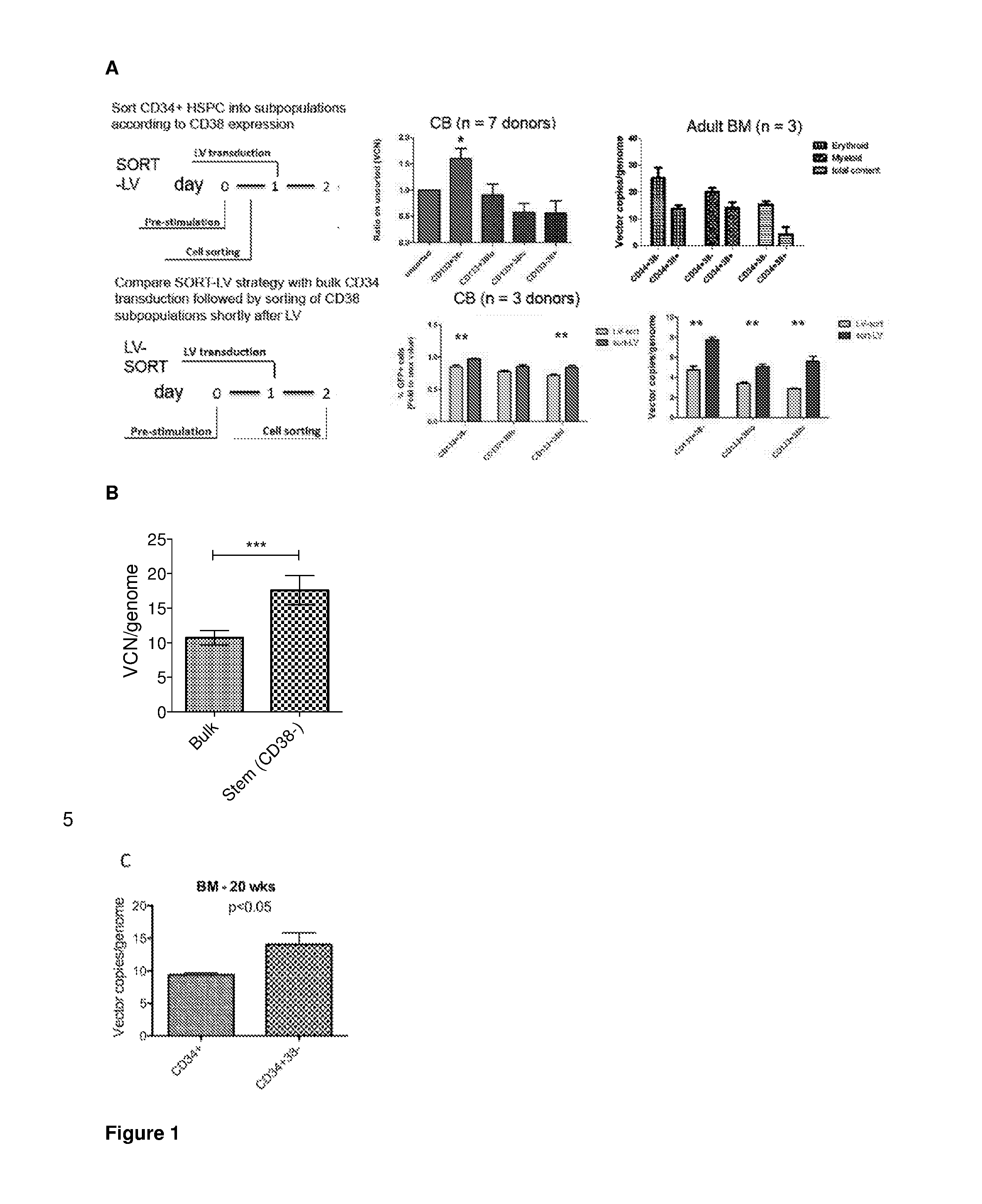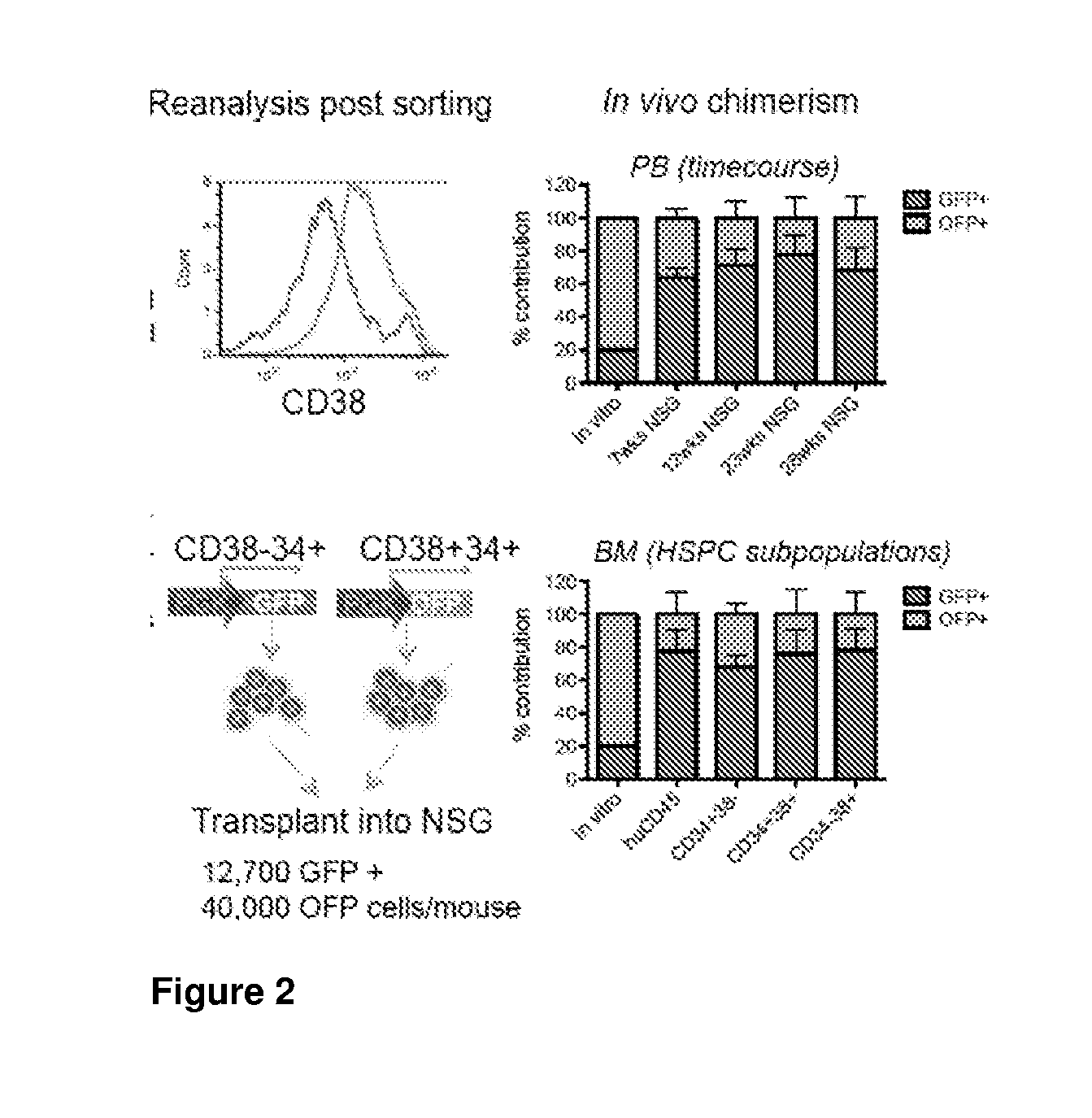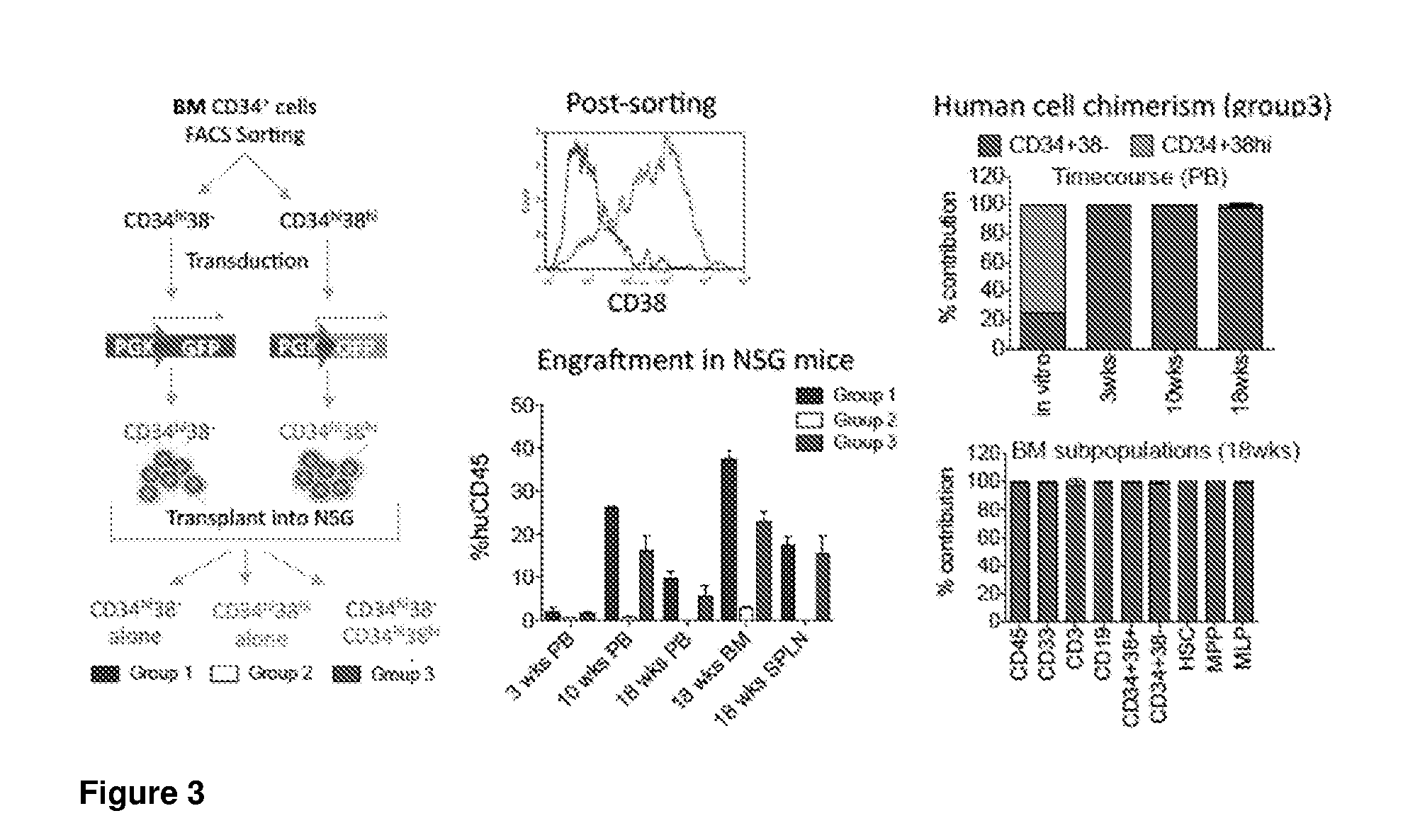Method
- Summary
- Abstract
- Description
- Claims
- Application Information
AI Technical Summary
Benefits of technology
Problems solved by technology
Method used
Image
Examples
example 1
Highly Purified HSCs are More Transducible by Lentiviral Vectors
[0347]We studied the differential effect of a microRNA on haematopoietic stem and progenitor cell populations. To this end, CD34+CD38− and CD34+CD38+ cord blood HSPCs were transduced with lentiviral miRNA sponge or overexpressing vectors (data not shown). Unexpectedly, and in contrast to what is widely assumed in the field, we noted a 1.5-fold increased gene transfer into the more primitive, CD34+CD38− HSC-enriched subset. We independently confirmed this observation on multiple cord blood and adult bone marrow donors using biologically neutral vectors expressing marker genes, demonstrating a 1.5 to 2-fold increased gene transfer efficiency into sorted CD34+CD38− HSC-enriched fractions as compared to bulk CD34+ or CD34+CD38+ cell transduction (FIG. 1(A)).
[0348]Since bulk CD34+ HSPCs contain a small subset of CD38− cells, we wanted to test whether this increased transducibility of more primitive cells was also maintaine...
example 2
A Bead-Based, Sequential Negative / Positive Selection for CD38 and CD34, Respectively, Allows Purification of Cells with Superior NSG Engraftment Potential
[0351]In order to test the feasibility of a bead-based, sequential negative / positive selection for CD38 and CD34, respectively, we applied a commercially available CD38 selection kit to human cord blood mononuclear cells and tested the engraftment potential of the CD38− (further enriched for CD34 by positive selection) and CD38+ fraction in NSG mice by competitive transplantation (FIG. 2). Even though we used a first generation, non-optimised selection protocol, we could clearly demonstrate an engraftment advantage for the CD38− fraction. While CD38− cells made up less than 20% of the transplant, 70-80% of long-term engraftment was derived from this fraction, motivating further optimisation of this purification protocol.
example 3
Modelling a Split Transplant in NSG Mice
[0352]To model the co-transplantation of genetically-modified long-term repopulating cells with short-term progenitor cells, we differentially marked the stem cell enriched fraction and various progenitor cell fractions with a set of fluorescent protein expressing lentiviral vectors (LV) and studied the engraftment kinetics in NSG mice, both in a competitive and a non-competitive setting.
[0353]First, CD34+ adult bone marrow HSPC were sorted into CD34+CD38− (+ / −) and CD34+CD38hi (+ / hi) cells, pre-stimulated in Stem Span SFEM containing SCF (300 ng / mL), Flt3L (300 ng / mL), TPO (100 ng / mL), IL6 (60 ng / mL) and dmPGE2 (10 μM) for 16 h, and transduced with a GFP-LV (+ / −) or OFP-LV (+ / hi). After 24 h of transduction, cells were injected into 8 week old, sublethally irradiated NSG mice as follows:[0354]Group 1: 27,000+ / − cells per mouse (n=3);[0355]Group 2: 248,000+ / hi cells per mouse (n=3);[0356]Group 3: 27,000+ / − and 248,000+ / hi cells per mouse (n=3...
PUM
| Property | Measurement | Unit |
|---|---|---|
| Time | aaaaa | aaaaa |
| Composition | aaaaa | aaaaa |
| Efficiency | aaaaa | aaaaa |
Abstract
Description
Claims
Application Information
 Login to View More
Login to View More - R&D
- Intellectual Property
- Life Sciences
- Materials
- Tech Scout
- Unparalleled Data Quality
- Higher Quality Content
- 60% Fewer Hallucinations
Browse by: Latest US Patents, China's latest patents, Technical Efficacy Thesaurus, Application Domain, Technology Topic, Popular Technical Reports.
© 2025 PatSnap. All rights reserved.Legal|Privacy policy|Modern Slavery Act Transparency Statement|Sitemap|About US| Contact US: help@patsnap.com



